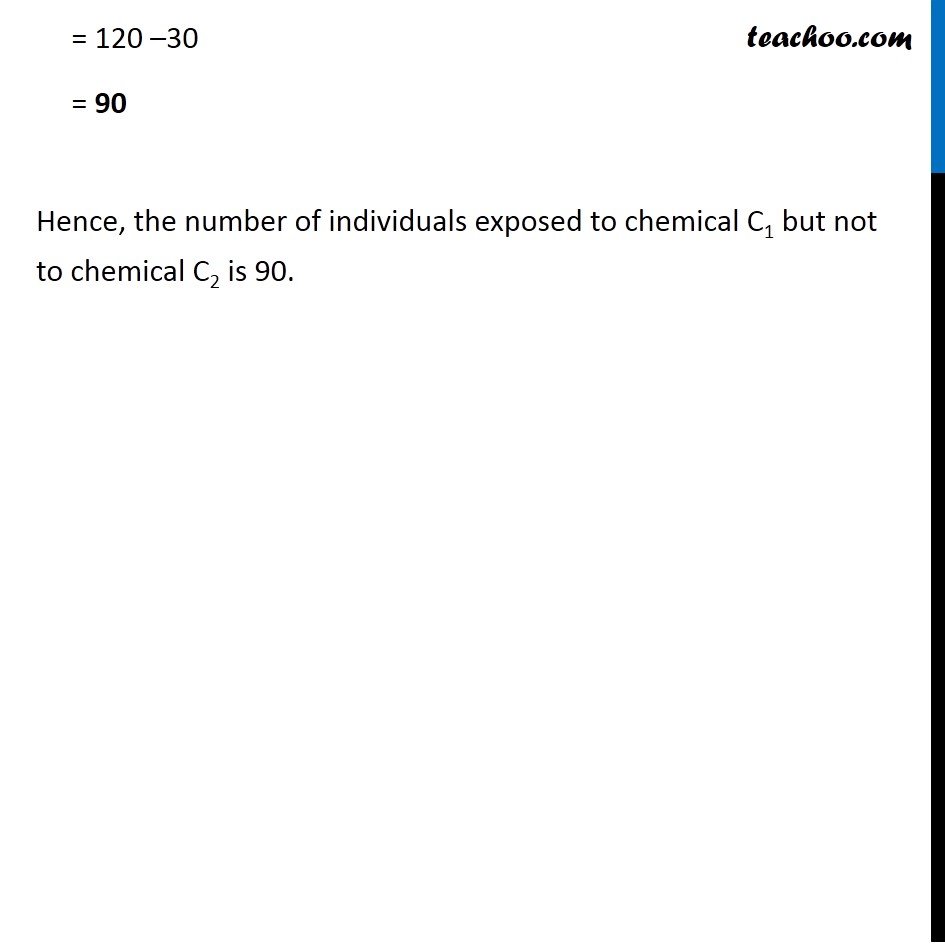





Number of elements in set - 2 sets - (Using properties)
Number of elements in set - 2 sets - (Using properties)
Last updated at Dec. 13, 2024 by Teachoo






Transcript
Question 5 There are 200 individuals with a skin disorder, 120 had been exposed to the chemical C1, 50 to chemical C2, and 30 to both the chemicals C1 and C2. Find the number of individuals exposed to (i) Chemical C1 but not chemical C2 Number of people exposed to chemical C1 but not Chemical C2 = Number of people exposed to chemical C1 – Number of people exposed to both chemical C1 & C2 People exposed to only chemical C1 People exposed to both chemical C1 & C2 = 120 –30 = 90 Hence, the number of individuals exposed to chemical C1 but not to chemical C2 is 90. Question 5 There are 200 individuals with a skin disorder, 120 had been exposed to the chemical C1, 50 to chemical C2, and 30 to both the chemicals C1 and C2. Find the number of individuals exposed to (ii) Chemical C2 but not chemical C1 Number of people exposed to chemical C2 but not Chemical C1 = Number of people exposed to chemical C2 – Number of people exposed to both chemical C1 & C2 People exposed to only chemical C2 People exposed to both chemical C1 & C2 = 50 – 30 = 20 Thus, the number of individuals exposed to chemical C2 and not to chemical C1 is 20 Question 5 There are 200 individuals with a skin disorder, 120 had been exposed to the chemical C1, 50 to chemical C2, and 30 to both the chemicals C1 and C2. Find the number of individuals exposed to (iii) Chemical C1 or chemical C2 Let U denote the universal set consisting of individuals suffering from the skin disorder, A and B denote the set of individuals exposed to the chemical C1 & chemical C2 respectively Number of people with skin disorder = n(U) = 200, Number of people exposed to chemical C1 = n(A) = 120 Number of people exposed to chemical C2 = n(B) = 50 Number of people exposed to both chemical C1 & C2 = n (A ∩ B) = 30 Number of individuals exposed either to chemical C1 or to chemical C2 = n(A ∪ B) We know that n (A ∪ B) = n (A) + n (B) – n (A ∩ B) = 120 + 50 – 30 = 140 Thus, 140 individuals are exposed either to chemical C1 or to chemical C2